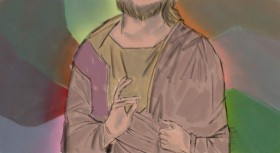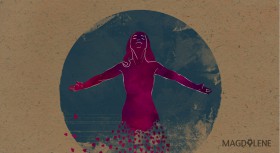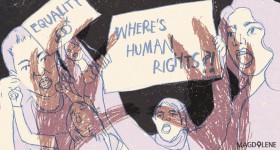After a month-long competition, the United States of America won FIFA Women’s World Cup for the third time, beating Japan 5-2 in the finals early this month. The thrilling final match happened shortly after the US Supreme Court legalized same-sex marriage on 26 June. The decision is a reminder of the long battle against homophobia in the sport.
It is an undeniable fact that football still has a problem with homophobia. In a press conference in 2013, FIFA President Sepp Blatter evaded a question on this issue: “This, I think, is not the time to bring it up now. If you bring it to my attention, then I should have a look at it, but I cannot give you a definite answer.”
When Mexican fans chanted anti-gay slurs in Men’s World Cup 2014 in Brazil, FIFA investigated the case, but finally dropped it after its disciplinary committee considered the word “puto” not a derogatory term. In fact, “puto” in Spanish could be translated as “gay”. The world of football has always been a men’s world, with misogyny, sexism and homophobia being common ingredients.
Women in football have had to battle sexism and discrimination, and homophobia adds another layer to this. But women’s football has been less harsh when dealing with homosexuality than its male counterparts. It is commonly known that many female footballers are lesbians, and in recent years, more of them have come out.
During FIFA Women’s World Cup in Canada, Swiss International forward, Ramona Bachmann for the first time talked about her girlfriend openly to Swiss popular newspaper, Sonntagsblick. She decided to come out publicly after Switzerland beat Ecuador with 10-1, three of the goals were made by her. It was a perfect timing for Bachmann to reveal that she was in relationship with Camille Lara, a 21-year-old student.
“When I hold hands with Camille on the street in Switzerland, people turn their heads. This is not the case in Sweden, and not here in Canada,” said the 24-year-old forward who had been called “the Female Messi from Switzerland”. Bachmann was already pretty open on her Instagram, sharing some pictures of her and her girlfriend.
Bachmann is not alone. There are 17 World Cup players who are open about their homosexuality. Two-time World Cup winners and Germany Women’s National Team, Nadine Angerer talked about her bisexuality in 2010.
In her biography, Angerer said: “I have been with men. But, I do love women only.” Many female players who are openly lesbian are in romantic relationships with their teammates, but Angerer avoided romance with colleagues,
"With a footballer, let alone a fellow player, I've never been together.... Never fuck the Company," she writes in her book Im richtigen Moment: Meine Story. Angerer has been in a relationship with Magda Golombek since 2013.
The US Women’s National Team veteran Abby Wambach, who just won the 3rd World Cup for USA is also open about her relationship. In 2013 she married her former teammate Sarah Huffman.
“After I got married, I definitely had a shift in emotional devotion. Forever, it was just soccer – passion, life, love. Then I got married, and I had to transfer some of my energy. I want to be my best for my country, but I also made a really big promise and choice to be the best in my marriage. That has not always been the easiest thing to manage,” said Wambach to The New York Times in 2013.
Isabelle Herlovsen is the daughter of famous international footballer Kai Erik Herlovsen. When she was born, her father played for Borussia Mochengladbach. She came out as a lesbian publicly in July 2011, but had been out to her friends and family since her teen years. It felt natural to her when she wanted to be true to herself. She believes that it is important to be open publicly.
The Canadian International goalkeeper, Erin McLeod is in a relationship with fellow National Women's Soccer League (NWSL) side, Houston Dash teammates Ella Masar.
McLeod wrote in her blog: “As I get older I realize how important it is to be true to exactly who you are – and to have the courage to be just that – so that all young people can grow up in a world that is accepting of all people – lesbian, gay, bisexual, transgendered, or heterosexual.”
Her partner Masar, who is very religious, came out in an honest article in Pitchside Report, telling of her current love, “That has always been my deal with Erin – that was my word to her that love will always win.”
Masar and McLeod shared their moments together on their Instagram and Twitter accounts.
Katie Duncan (nee Hoyle), who played for New Zealand’s national team, just wedded former Football Ferns (the team’s nickname) team member Priscilla Duncan. After the wedding, Katie adjusted her life and joined Swiss Nationalliga side FC Zurich to be closer with her wife.
The Swedish team has several openly lesbian players. Nilla Fischer is married to Maria Michaela in November 2013 and had her upper arm tattooed with the declaration "I love her. That is the beginning and the end of everything.” She was named “LGBTQ Person of the Year” in 2014 in Sweden.
The Swedish International goalkeeper, Hedvig Lindahl is married and has a son with her wife Sabine. Swedish midfielder, Caroline Seger, who has won over a century caps for the country’s national team since her debut in 2005, used to conceal her sexuality, but decided to speak out to help other gay and lesbian young people who might be struggling with their identity. Lisa Dahlkvist, daughter of former pro footballer Sven Dahlkvist, came out publicly as lesbian in 2008 and is now in a relationship with Jessica Danielson.
There is no secret about the US Women’s National Team midfielder, Megan Rapinoe, who came out as lesbian in 2012. She said: “I just felt like I was leaving something out and omitting something and not being 100 percent truthful. Even though I never lied about anything.”
England and Arsenal Ladies defender, Casey Stoney, came out publicly in February 2014, and then announced that her partner, Megan Harris was pregnant with twins. Harris gave birth to Teddy and Tilly, in November 2014.
“I have struggled to accept myself for many years, I have had no reason to feel that way but there is still a stigma, you still hear certain abuse thrown at other people and think, We are still living in the dark ages sometimes. But actually what coming out has shown me is that society is changing for the better. I feel lucky to live in this country,” Stoney told the BBC.
While men’s football leagues are reluctant to support the LGBT community, female football teams offer acceptance.
Robbie Rogers is a member of LA Galaxy football club and a former US men’s national football team member. In February 2013, he came out as gay, making him the second gay football player in Britain to come out in public after Justin Fashanu. Several weeks after being released by Leeds United, he announced his retirement. Rogers claimed his sexuality had become a dark secret and he was forced to leave football, because of attitudes towards homosexuality in the sport. But in April 2013 he decided to return and joined LA Galaxy.
The world’s highest football organization has a lot of work to catch up.
*Wulan wrote about discrimination against women footballer in soccer-crazy Spain.
Retno Nino is a women’s football enthusiast and Brawijaya University Student. She’s also a co-founder of @womensfootie_id and founder of womensoccerid.wordpress.com . She can be reached on twitter @themininino.
Wulan Kusuma Wardhani is a media worker, a sports (particularly football) aficionado and a feminist. She’s also a contributor of womensoccerid.wordpress.com. She can be contacted on Twitter @csi_wulan.








Comments